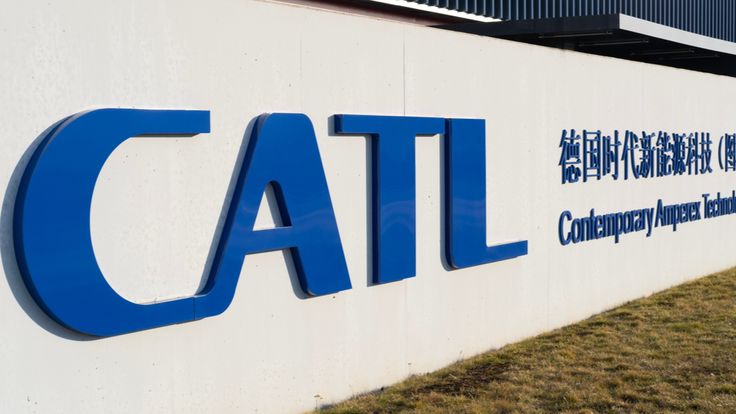Contemporary Amperex Technology Co. Limited (CATL), the undisputed global leader in electric vehicle batteries, watched its Hong Kong-listed shares plummet over 8% on November 20, 2025, erasing billions in market value in a single trading session. The sharp decline capped a volatile week for the battery behemoth, triggered primarily by the expiration of a six-month lockup period that unleashed 77.5 million previously restricted shares onto the market. This event, combined with a major shareholder’s stake sale and mounting geopolitical headwinds, has ignited fears of broader turbulence in the EV supply chain, signaling potential cracks in China’s dominance of the green energy revolution.
The lockup expiry, effective November 19, freed up holdings from 23 cornerstone investors who poured HK$35.7 billion ($4.6 billion) into CATL’s blockbuster May 2025 IPO—the largest global listing of the year. Heavyweights like Sinopec, the Kuwait Investment Authority, and Hillhouse Investment snapped up the shares at a premium, betting on CATL’s 43% stranglehold on the world’s EV battery market as of Q3 2025. But with the restrictions lifted, profit-taking ensued as these early backers cashed in on the stock’s blistering 92% rally since debut. Trading volume spiked to 15 times the average, with shares closing at HK$285.50, down 8.2% from the prior day. On the Shenzhen exchange, A-shares fared slightly better but still shed 2.59%, closing 6.56% lower overall.
This wasn’t an isolated jolt. Just days earlier, on November 15, CATL disclosed that its third-largest shareholder and co-founder, Vice Chairman Huang Shilin, planned to offload 45.63 million shares—roughly 1% of the company’s total capital—via a private inquiry-based transfer to institutional buyers. Holding over 10% of CATL, Huang’s move rattled investors already on edge, driving Shenzhen shares down as much as 5.4% in intraday trading. While the sale avoids the open market and won’t directly dilute free float, it underscores a lack of conviction at the top amid softening EV demand signals. CATL’s recent quarterly results, though boasting a 15% net profit jump, revealed revenue growth slowing to single digits for the first time in years, squeezed by price wars and overcapacity in China’s battery sector.
Geopolitical storm clouds are gathering fast, amplifying the selloff’s severity. The U.S. Department of Energy’s November 17 announcement of stricter grid interconnection rules for foreign-sourced energy storage systems has spotlighted CATL as a prime target. Under the guise of national security, these measures could effectively bar CATL’s products from American utilities, hitting a key growth avenue as U.S. renewables expand. With exports to North America and Europe already facing tariffs and subsidies favoring local rivals like LG Energy Solution and Panasonic, analysts warn of a 20-30% revenue hit if barriers solidify. Rivals BYD and LG are gaining ground in these markets, eroding CATL’s edge through cost innovations and diversified chemistries like sodium-ion batteries.
The fallout extends beyond CATL’s ledger. As the powerhouse supplying Tesla, BMW, and Volkswagen, any prolonged weakness could ripple through the global EV ecosystem, delaying affordable models and stalling the 2035 net-zero pledges from automakers. Lithium prices, already volatile, dipped another 3% on the news, reflecting bets on subdued demand growth. In China, where EV sales surged 35% year-over-year in October, the government’s push for consolidation in the battery industry now feels urgent—CATL’s market share, while dominant, faces fragmentation from nimbler upstarts.
Yet, glimmers of resilience persist. CATL’s fundamentals remain rock-solid: Q3 margins held at 25%, fueled by breakthroughs in condensed batteries offering 1,000 km range per charge. The company countered the pressure with a ¥254 million ($35 million) share repurchase of 1 million shares on November 18, a symbolic bid to shore up confidence. Forward guidance projects 30% lithium demand growth in 2026, driven by energy storage megaprojects in Europe and Asia. Changjiang Securities, in a post-selloff note, dubbed the dip an “accumulation window,” urging long-term buyers to eye entry points below HK$270 where valuations trade at a forward P/E of 18x—modest against peers.
For investors, this crash is a litmus test for the EV battery thesis. CATL’s tumble highlights the sector’s maturation pains: from explosive growth to disciplined profitability amid trade frictions and cyclical slowdowns. As the world accelerates toward electrification, today’s warning signs could either forge a more robust industry or expose vulnerabilities that derail the transition. With CATL’s next earnings due in December, the coming weeks will reveal if this is a fleeting storm or the harbinger of deeper supply chain woes. In the high-stakes race for battery supremacy, even giants like CATL aren’t immune to the shocks of a charging world.

